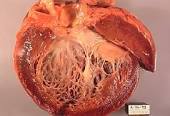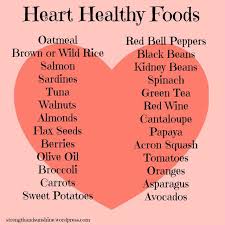
Diagnosed with Cancer? Your two greatest challenges are understanding cancer and understanding possible side effects from chemo and radiation. Knowledge is Power!
Learn about conventional, complementary, and integrative therapies.
Dealing with treatment side effects? Learn about evidence-based therapies to alleviate your symptoms.
Click the orange button to the right to learn more.
Cardio-Oncology & the Cancer Survivor

The article titled “Cardio-Oncology…” linked and excerpted below displays its perspective from its very first sentence. The relationship between cardiotoxic chemo and cancer patients’ is not “complex.” Cardiotoxic chemo damages the patient’s heart. End of sentence.
The challenge for the cancer patient is to understand cardiotoxicity and those therapies, both conventional and non-conventional, that can reduce or prevent heart damage. The earlier in the cancer patient’s therapy plan that he/she understands this issue, the better.
The article linked below is designed to explain cardio-oncology from a “big picture” or broad perspective.
What damage can cardiotoxic chemotherapy cause to the cancer patient?
Cardiotoxic chemotherapy refers to the potential side effects of certain cancer treatments on the heart. While these treatments can be effective in targeting and killing cancer cells, they may also harm healthy cells, including those in the heart. The extent and type of damage can vary depending on the specific chemotherapy drugs used, the dose administered, the duration of treatment, and individual patient factors. Here are some potential cardiotoxic effects:
- Cardiomyopathy: Chemotherapy drugs such as anthracyclines (e.g., doxorubicin) can damage the heart muscle, leading to a condition called cardiomyopathy. This can result in a weakened heart, reduced pumping ability, and potential heart failure.
- Arrhythmias: Chemotherapy may disrupt the normal electrical conduction in the heart, leading to arrhythmias (irregular heart rhythms). This can cause palpitations, dizziness, or fainting.
- Pericarditis: Inflammation of the sac surrounding the heart (pericardium) can occur as a result of chemotherapy, leading to chest pain and other symptoms.
- Hypertension: Some chemotherapy drugs may cause an increase in blood pressure, putting additional strain on the cardiovascular system.
- Thrombosis: Chemotherapy can affect the blood’s ability to clot properly, increasing the risk of blood clots (thrombosis), which can have serious consequences if they travel to the lungs or brain.
- Myocarditis: Inflammation of the heart muscle (myocarditis) is a rare but potential side effect of certain chemotherapy drugs.
While I can’t support my thinking with research, I believe that most every cancer patient who undergoes any real amount of chemotherapy will damage his/her heart at least a little. The type of chemo, dose of chemo, etc. dictate how much actual heart damage is done to the cancer patient. And how long he/she lives after active conventional treatments.
I underwent several different types of cardiotoxic chemo regimens in 1995. I managed to hold off the typical signs of chemotherapy-induced cardiomyopathy until December of 2010. Survivors of my type of cancer, multiple myeloma, rarely live for 15 years beyond their original therapy. Statistically speaking, I should have died long before chemotherapy-induced cardiomyopathy reared its ugly head.
How many other cancer patients who underwent cardiotoxic therapies who die within 15 years of their active therapy would have experienced chemotherapy-induced cardiomyopathy?
Cardio-oncology is a conventional or FDA approved approach to heart damage caused by chemotherapy. As such it must adhere to FDA approved therapies. While I applaud conventional therapies such as heart meds, diagnostics, etc, I also advocate the inclusion of evidence-based but non-conventional therapies such as
- heart health nutrition,
- supplementation and
- therapies such as whole-body hyperthermia
into the mix of therapies for those cancer patients who are at risk of chemotherapy-induced cardiomyopathy.
Have you been diagnosed with cancer? Are you considering undergoing chemotherapies that may damage your heart? Let me know if you’d like to learn more about preventing heart damage. David.PeopleBeatingCancer@gmail.com
Thanks,
David Emerson
- Cancer Survivor
- Cancer Coach
- Director PeopleBeatingCancer
Cardio-Oncology: Managing Cardiovascular Complications of Cancer Therapies
“This narrative review explores the complex relationship between cancer medicines and cardiovascular health in the junction of oncology and cardiology, known as cardio-oncology…
The field of cardio-oncology encompasses more than just the first therapy period, acknowledging that cancer treatments can have both short-term and long-term effects on the circulatory system.
- Chemotherapy,
- radiation therapy, and
- targeted therapies,
which are commonly used to treat cancer, can cause cardiotoxicity [4].
This means they can lead to various cardiovascular problems, including heart muscle malfunction and irregular heartbeats. The development of new cancer treatments, such as immunotherapies and kinase inhibitors, highlights the importance of a specialist approach to cardiovascular care for individuals with cancer [5].
The importance of managing cardiovascular problems in cancer patients cannot be exaggerated. Cancer survivors have a fresh array of difficulties as they navigate their lives after completing cancer treatment. Survivors frequently struggle with cardiovascular problems that can undermine their overall health and quality of life, such as
- heart failure,
- hypertension, and
- atherosclerosis [6].
Furthermore, recognizing and controlling cardiovascular difficulties are essential aspects of cancer therapy planning to enhance the effectiveness of cancer treatment and reduce the likelihood of adverse cardiac events…
Furthermore, the increase in cardiovascular morbidity associated with cancer imposes a significant financial strain on healthcare systems globally. The economic consequences go beyond the direct expenses linked to cardiovascular procedures, including indirect costs connected with extended hospital admissions, rehabilitation, and the potential decrease in productivity among cancer survivors [7].
Therefore, cardio-oncology is becoming a crucial priority for healthcare systems aiming to provide comprehensive and cost-efficient care to a growing and aging population affected by cancer…
Incorporating cardio-oncology into the broader context of cancer treatment acknowledges the comprehensive requirements of patients, including their
- physical,
- emotional, and
- social aspects.
Cardio-oncology is crucial beyond conventional medical bounds, recognizing the complex relationship between cancer and cardiovascular well-being [9]. This field spans various aspects, including
- prevention,
- early detection, and
- intervention,
providing a comprehensive strategy to address the growing cardiovascular problems in cancer patients. Understanding the importance of cardio-oncology is crucial, not only for improving patient outcomes but also for addressing the broader societal and economic impact of managing both cancer and cardiovascular disorders.
Cardio-oncology is positioned at the vanguard of the changing healthcare environment, with the potential to influence the future of cancer treatment by incorporating cardiovascular well-being into the holistic care of cancer patients [10]...
Lifestyle Modifications and Risk Factor Management
Implementing lifestyle adjustments is crucial for reducing cardiovascular risk in cancer patients. Promoting a heart-healthy lifestyle, which encompasses
- consistent physical activity,
- a well-balanced diet, and
- smoking cessation,
enhances overall cardiovascular well-being in patients [27]. Lifestyle therapies in cancer survivors target cardiovascular risk and improve quality of life and overall health.
Risk factor management entails the management of modifiable cardiovascular risk factors, including
- hypertension,
- diabetes, and
- dyslipidemia [28].
Proactively controlling these risk factors frequently and utilizing pharmacological interventions as needed aid in reducing cardiovascular risk and can potentially improve the safety of cancer treatments [29]…
Conclusions
In conclusion, combining
- non-invasive imaging techniques,
- early detection methods,
- and multidisciplinary care
in cardio-oncology provides a thorough strategy to enhance the cardiovascular health of individuals with cancer. Echocardiography, cardiac MRI, and nuclear imaging aid in promptly detecting problems, while the cooperative endeavors between oncologists and cardiologists, facilitated by specialized cardio-oncology clinics, emphasize the significance of comprehensive patient treatment.
The main conclusions highlight the importance of actively assessing and categorizing risks, consistently monitoring the situation, and implementing tailored interventions, which may involve new therapies and supportive programs…”



